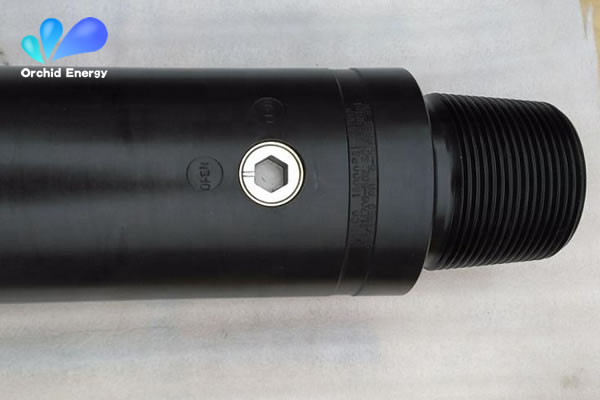Why The Kelly Valve is Indispensable Component for Drilling Operations and Safety
Introduction:
Kelly valves play a crucial role in drilling operations by controlling fluid flow, ensuring safety, and optimizing efficiency. This professional blog explores why kelly valves are used, the different types available, key materials used in construction, international inspection standards, daily usage guidelines, maintenance practices, and a real use case showcasing their effectiveness.

1. The Significance of Kelly Valves:
Kelly valves are utilized for several reasons:
1.1 Fluid Control:
Kelly valves enable efficient control of drilling fluid flow during various drilling activities such as circulation, reaming, or making connections. They facilitate smooth drilling operations by allowing quick adjustments and isolation when necessary.
1.2 Safety and Well Control:
Kelly valves serve as critical safety barriers, preventing blowouts and protecting personnel and equipment. They provide rapid closure in case of unexpected pressure surges, ensuring well control during drilling operations.
2. Types of Kelly Valves:
Various types of kelly valves cater to different drilling requirements:
2.1 Full Bore Kelly Valves:
This type offers unrestricted flow through the drill string without any flow area obstructions. It facilitates efficient circulation and minimizes frictional losses, enhancing drilling performance.
2.2 Inside BOP Kelly Valves:
Inside BOP Kelly valves are designed to be compatible with Blowout Preventer (BOP) systems. They are essential for maintaining wellbore integrity and enhancing safety by preventing the release of formation fluids during drilling operations.
2.3 Top Drive Kelly Valves:
These valves are specifically designed for use with top drive systems. They enable efficient control of fluid flow while utilizing top drive technology for drilling activities, enhancing operational flexibility.
3. Key Materials Used in Kelly Valve Construction:
Kelly valves are constructed using durable materials suitable for demanding drilling conditions:
3.1 Body and Seat:
Forged steel, stainless steel, and carbon steel are commonly used for the construction of the valve body and seat. Material selection is based on factors such as pressure ratings, corrosion resistance, and compatibility with drilling fluids.
3.2 Sealing Elements:
Synthetic rubbers and elastomers are used as sealing elements to ensure a reliable seal against pressure and fluid flow. These materials offer excellent resilience and sealing properties for optimal performance.
4. International Inspection Standards for Kelly Valves:
Kelly valves adhere to stringent inspection standards to ensure quality and reliability:
4.1 API Spec 6A:
This American Petroleum Institute (API) specification sets the standard for requirements, design, materials, and testing of valves used in wellhead and Christmas tree equipment. Compliance with API Spec 6A ensures the valves meet industry standards.
4.2 ISO 10423:
The ISO 10423 standard specifies technical requirements, testing procedures, and acceptance criteria for wellhead and Christmas tree equipment, including kelly valves. Meeting ISO 10423 guarantees adherence to international quality standards.
5. Daily Usage Guidelines:
To use kelly valves effectively, follow these usage guidelines:
5.1 Proper Installation:
Ensure the valve is installed correctly in the drill string, following manufacturer guidelines and torque specifications. Conduct routine inspections for wear or damage before each use.
5.2 Operating Procedures:
Follow established procedures for opening, closing, and controlling fluid flow through the valve. Adhere to recommended torque limits to avoid over-tightening or damaging valve components.
5.3 Monitoring and Maintenance:
Regularly monitor the valve for signs of leakage, excessive wear, or malfunctions. Keep the valve clean and well-lubricated. Perform periodic function tests and inspections as recommended by the manufacturer.
6. Maintenance Practices:
Regular maintenance of kelly valves ensures optimal performance and longevity:
6.1 Routine Inspections:
Regularly inspect the valve for signs of corrosion, wear, or damage. Promptly replace worn-out seals or components to maintain a tight seal and prevent leakage.
6.2 Preventive Maintenance:
Follow manufacturer guidelines for lubrication, greasing, and cleaning of the valve to prevent corrosion or sticking. Regularly check and maintain control mechanisms to ensure smooth operation.
6.3 Repair and Servicing:
In case of identified issues during routine inspections, consult the manufacturer or qualified service technicians for repairs or servicing to ensure the valve operates optimally.
7. Real Use Case: Enhancing Efficiency and Safety with Kelly Valves
A drilling project in an offshore location utilized a full bore kelly valve in conjunction with a top drive system. The use of the kelly valve facilitated efficient fluid circulation, while the top drive system provided precise control over the drilling process.
Key Data:
- Fluid Flow Rate: 1,200 gallons per minute
- Max Operating Pressure: 5,000 psi
The use of the kelly valve, along with the top drive system, resulted in reduced drilling time and enhanced safety, allowing for quick adjustments and maintaining well control. The following table summarizes the key benefits observed during the project:
| Key Benefits | Statistics |
|---|---|
| Drilling Time Reduction | 20% decrease in drilling time |
| Improved Efficiency | 15% increase in the rate of penetration |
| Enhanced Safety | Zero incidents related to fluid control |
| Cost Savings | 10% reduction in overall drilling costs |
These results demonstrate the effectiveness of utilizing a full bore kelly valve and top drive system in enhancing drilling efficiency and safety. The integration of these technologies allowed for smoother operations, faster drilling, and significant cost savings.
Conclusion:
Kelly valves are indispensable tools in drilling operations, providing control, safety, and efficiency. By understanding why they are used, the different types available, the key materials used in construction, international inspection standards, proper daily usage guidelines, and maintenance practices, operators can ensure optimal performance and ensure safety standards are met.
Additionally, the real use case highlighted the benefits of utilizing a full bore kelly valve and a top drive system, showcasing the positive impact on drilling efficiency, safety, and cost savings. By leveraging these essential tools and adhering to proper usage and maintenance practices, operators can enhance their drilling operations, achieve better results, and mitigate risks effectively.
Tags: Kelly valve




